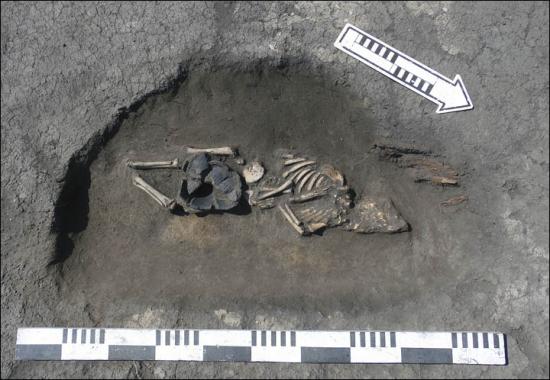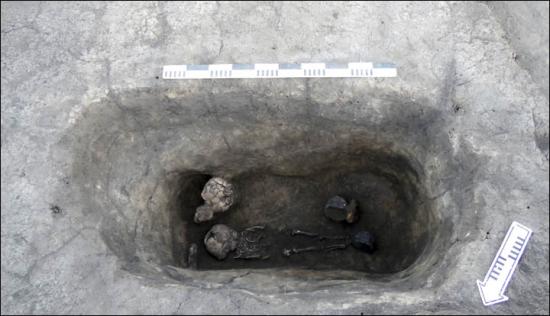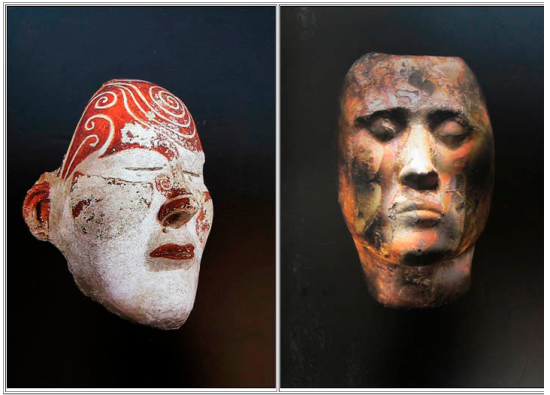PART.2
Remains of children were also found but without masks: they were buried outside the crypt. 'The children mostly were not cremated, at least until the age of five and they were not buried inside the crypt as a rule. We have here several children burials near the wall of the crypt.'

 'The children mostly were not cremated, at least until the age of five and they were not buried inside the crypt as a rule. We have here several children burials near the wall of the crypt.' Pictures: Pavel German
'The children mostly were not cremated, at least until the age of five and they were not buried inside the crypt as a rule. We have here several children burials near the wall of the crypt.' Pictures: Pavel German
He explained the rituals of death as evidenced by the discoveries. 'The crypt was made and it functioned for one year or more. First of all they dug a hole in the ground, built a stone wall around it, made a decking and covered this with logs. Then gradually the crypt was filled with the dummies (containing the remains of the dead).
'They held some rites there, funeral feasts. We cannot say exactly yet, how long this crypt functioned. Was it one year or two, or all the burials were made simultaneously. It is the the subject of scientific debate. Anyway, after the crypt was filled it was burned down. The wooden construction fell down and overlapped burials.'
 Tashtyk death masks found earlier are held in the State Hermitage Museum in St. Petersburg, along with other museums. Pictures: Boris Dolinin
Tashtyk death masks found earlier are held in the State Hermitage Museum in St. Petersburg, along with other museums. Pictures: Boris Dolinin
He believes that treasures were robbed from the tomb. 'In this particular crypt, though it is rather big, we did not find any astonishing things, like an abidance of bronze findings or the artifacts covered with the gold leaf, which would be logical for such a big crypt. We suspect that it was partially robbed before the burning down. Maybe the worthy things were taken away during some rites, like the initiation of youth.'
Dr German is from the Institute of Human Ecology in Kemerovo. It is part of the Siberian Branch of the Russian Academy of Sciences. Tashtyk death masks found earlier are held in the State Hermitage Museum in St. Petersburg, along with other museums. Russian archaeologist Sergei Teploukhov, the first to study the Tashtyks in depth, suggested the culture was initially Indo-European dominated.